What is the difference between RAS and biofloc aquaculture?
Are you struggling with the limitations of traditional fish farming? The constant battle against water waste, disease, and pollution can be overwhelming, making you question the future of your aquaculture business. It's a challenge that many of us in the industry face daily.
Recirculating Aquaculture Systems (RAS) are controlled, tank-based systems that filter and reuse water, while biofloc technology is an in-situ method that uses microbial communities to convert waste into natural food. RAS focuses on mechanical and biological filtration, offering high control, whereas biofloc emphasizes ecological processes within the pond.
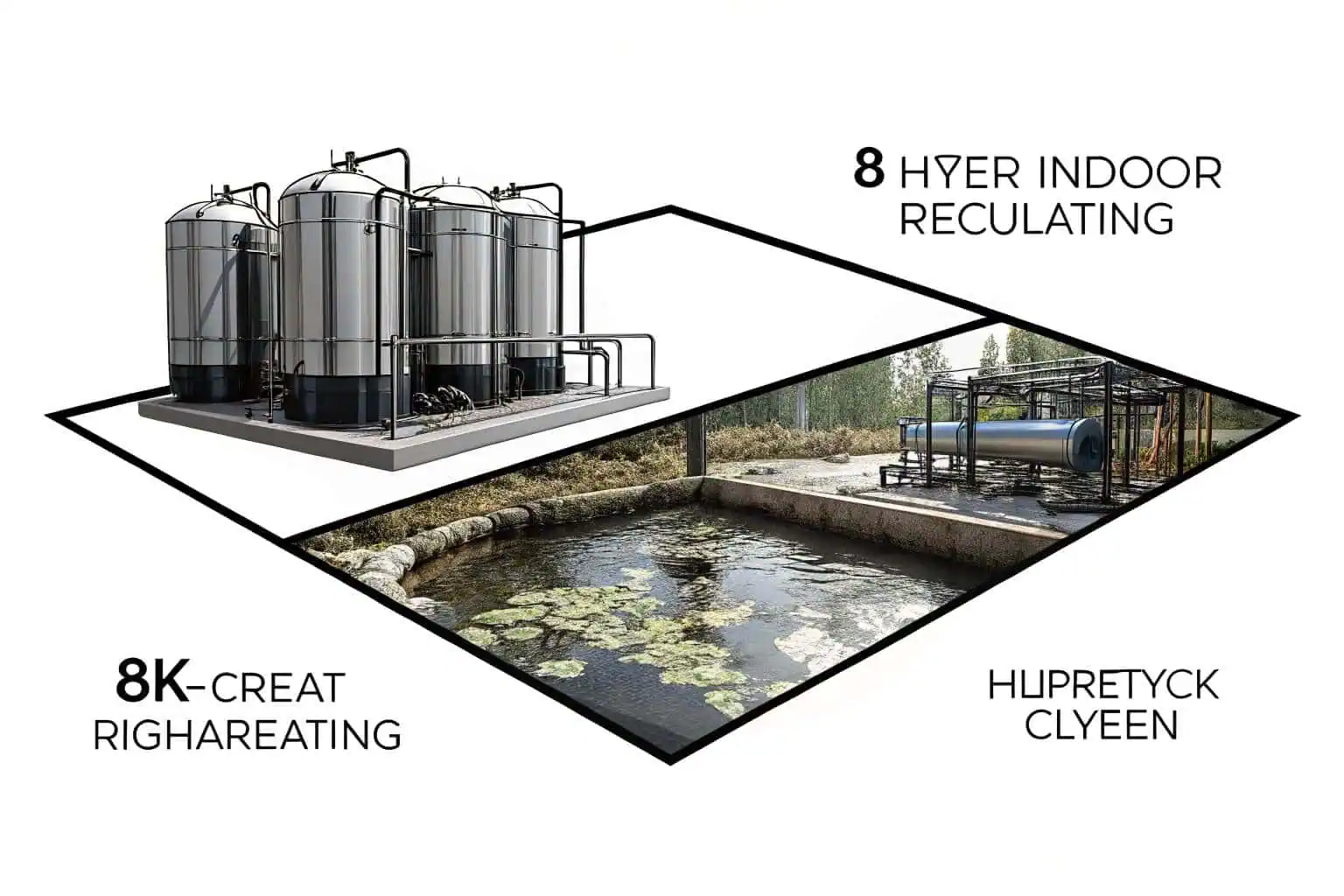
As someone deeply involved in aquaculture, I've seen firsthand how these challenges can stifle growth and passion. The dream of a sustainable and profitable farm often feels just out of reach. But what if there were two powerful, innovative paths forward? I've walked both paths, exploring the high-tech world of RAS and the natural harmony of biofloc. Each holds a key to unlocking a different kind of future for aquaculture, and I'm here to share what I've learned to help you find the right key for your farm.
What is the difference between biofloc and RAS?
Feeling stuck between choosing a high-tech, controlled system and a more natural, ecosystem-based approach? This decision can feel paralyzing, as the wrong choice could mean wasted investment and stalled progress for your farm.
The core difference lies in their approach to water treatment. Biofloc is a decentralized system where waste is managed within the culture pond by a microbial community. In contrast, RAS is a centralized system that pumps water through external filters to remove waste before returning it to the fish tanks.
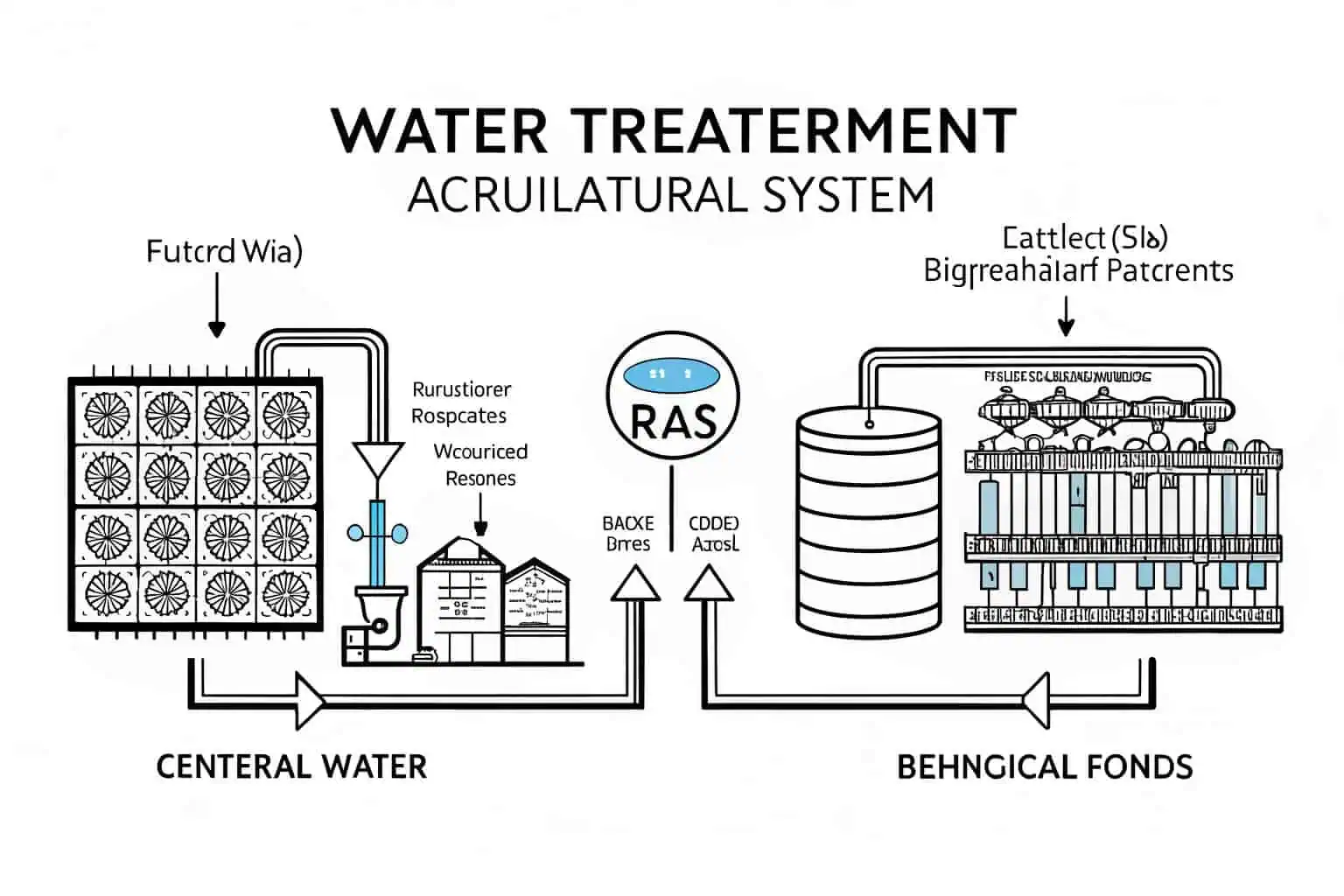
When I first explored these technologies, the distinction felt like choosing between being a pilot in a sterile cockpit (RAS) or a gardener cultivating a complex ecosystem1 (biofloc). One offers precision and control, the other, a dynamic, self-sustaining environment. To truly understand which is better for you, we need to look closer at how each one operates. It's not just about treating water; it's about a fundamental philosophy of farming. Let's break down what each system really means for a farmer on the ground.
System Philosophy
RAS is fundamentally an engineering solution. It treats the water as a component to be managed, purified, and returned. The goal is to create a perfectly stable, predictable environment for the fish, almost like a laboratory. My experience with RAS felt like being in complete command; every parameter, from oxygen levels to ammonia, was at my fingertips. Biofloc, on the other hand, is a biological approach2. It treats the pond as a living ecosystem. The goal is to cultivate a healthy community of bacteria and algae that manage waste naturally. Working with biofloc felt more like a partnership with nature, where my role was to guide and balance the system rather than control it completely.
Operational Complexity
On the surface, RAS seems more complex with its pumps, filters, and sensors. It requires a solid understanding of mechanical and electrical systems. However, once it's running, the daily management can be quite routine. Biofloc seems simpler—no complex machinery. But the biological complexity is immense. Managing the carbon-to-nitrogen ratio3, monitoring floc development, and preventing system crashes requires deep biological insight and constant attention. It's a different kind of challenge, one that's less about fixing a broken pump and more about understanding a living, breathing system.
Cost Structure
The financial aspect is often the deciding factor. RAS has a very high initial investment (CAPEX) due to the cost of tanks, pumps, and advanced filtration units. However, its operational costs (OPEX) can be lower in the long run due to feed efficiency and reduced water usage. Biofloc has a much lower CAPEX, making it accessible to more farmers. But its OPEX can be unpredictable. You might save on feed, but you could spend more on energy for aeration and labor for intensive water quality management. Here is a simple table to illustrate the point:
| Feature | Recirculating Aquaculture System (RAS)4 | Biofloc Technology5 |
|---|---|---|
| Concept | Engineering-driven, external filtration | Biology-driven, in-situ treatment |
| Control | High, precise environmental control | Moderate, manages a dynamic ecosystem |
| Initial Cost | High (tanks, pumps, filters) | Low (liners, aerators) |
| Operational Cost | Predictable (energy, feed) | Variable (energy, supplements) |
| Best For | High-value species, high-density farming | Shrimp, tilapia, resource-limited farms |
What does RAS mean in aquaculture?
Have you ever wished you could farm fish anywhere, regardless of the local water supply? The dependence on large, clean water sources limits where and how we can practice aquaculture, creating a barrier for many aspiring farmers.
RAS stands for Recirculating Aquaculture System. It is an advanced, land-based fish farming method where water is continuously treated and reused within a closed or semi-closed circuit. This technology allows for high-density fish production with minimal water exchange, independent of natural water bodies.
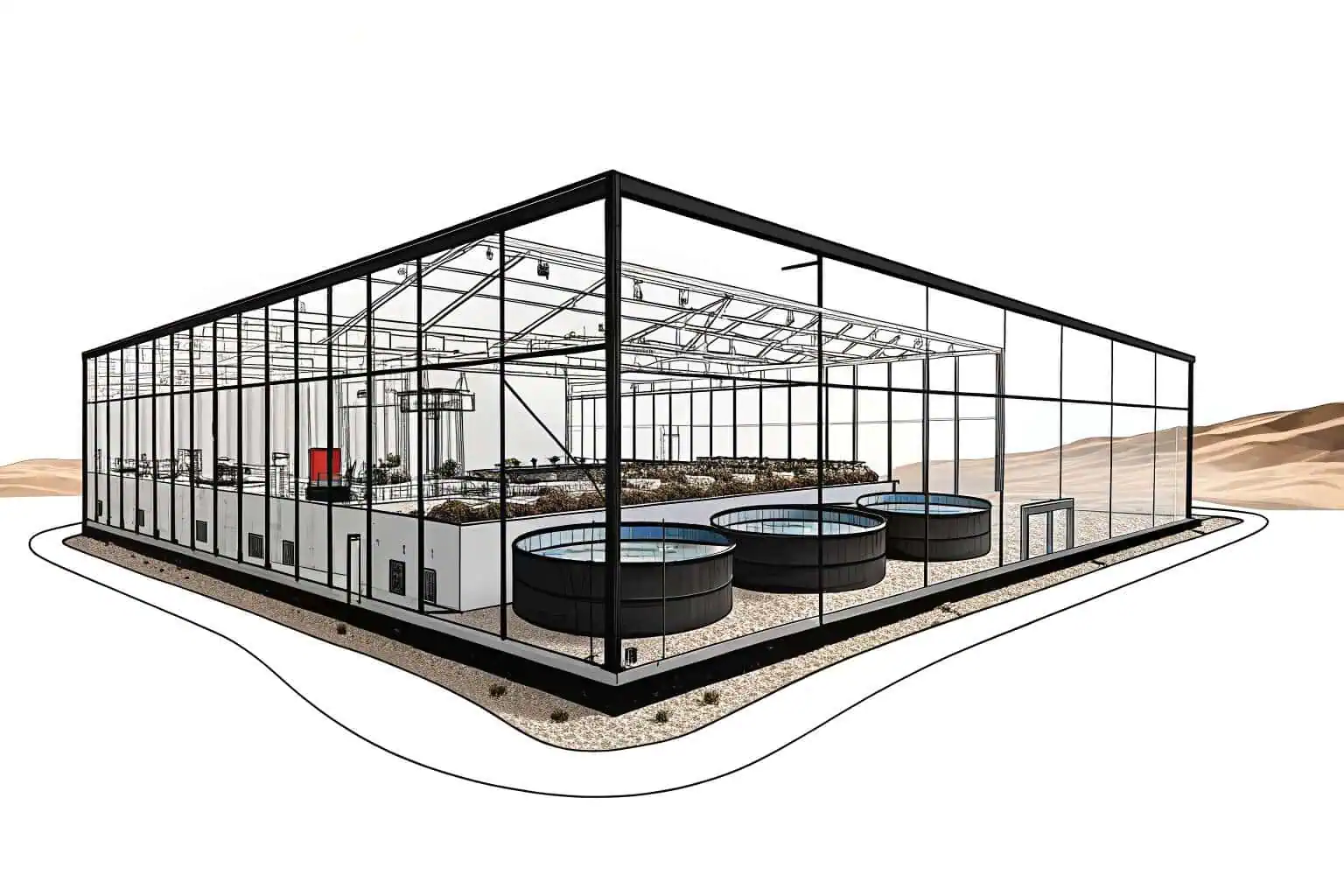
I remember the first time I saw a RAS facility6 in action. It was in an arid region, miles from any significant water source, yet it was teeming with healthy, market-ready fish. It was a powerful moment that shattered my traditional understanding of aquaculture. RAS isn't just a system; it's a paradigm shift. It transforms fish farming from an art dependent on location and luck into a science that can be deployed almost anywhere. Let's dive into the core components that make this revolution possible.
The Heart of the System: Water Circulation
At its core, RAS is a life support system for fish7. The process begins with water flowing from the fish tanks, carrying waste products like uneaten feed, feces, and ammonia. This water is then pumped through a series of treatment stages. This continuous loop is the defining feature of RAS. It's what separates it from traditional flow-through or pond systems. The goal is to turn dirty water back into a pristine environment for the fish, over and over again. This cycle happens 24/7, ensuring the fish are always in optimal conditions, which is a level of control I had only dreamed of in my early days with open ponds.
The Treatment Train: From Waste to Clean Water
The magic of RAS happens in its treatment components. First, mechanical filters, like drum filters, remove solid waste. Think of this as the system's kidneys. Next, the water enters a biofilter. This is the liver of the system, where beneficial bacteria convert toxic ammonia (excreted by the fish) into harmless nitrate. After biological filtration, the water is re-oxygenated, and the CO2 produced by the fish is removed. Sometimes, UV sterilizers or ozone contactors are used to kill any potential pathogens, acting as the system's immune defense. Only after this comprehensive cleaning process is the water returned to the fish tanks, ready to support life again. Here's a breakdown of the treatment train:
| Stage | Component | Function |
|---|---|---|
| 1. Solids Removal | Mechanical Filter (e.g., Drum Filter)8 | Removes solid waste like feces and uneaten feed. |
| 2. Detoxification | Biofilter9 | Converts toxic ammonia into less harmful nitrate. |
| 3. Gas Exchange | Degasser / Oxygenator | Removes excess CO2 and adds dissolved oxygen. |
| 4. Sterilization | UV Sterilizer / Ozonator | (Optional) Kills harmful pathogens and bacteria. |
The Promise of Control
Why go through all this trouble? The answer is control. In a RAS, you are the master of the environment. You control the temperature, oxygen levels, pH, and salinity. This means you can create the perfect growing conditions10 for any species, year-round, regardless of the outside climate. This level of control leads to faster growth rates, better feed conversion ratios, and predictable harvests. It's about taking the guesswork out of farming and replacing it with data-driven precision. For me, this was the ultimate appeal—the ability to provide the absolute best for my stock, every single day.
What is the RAS system in aquaculture?
Are you tired of the unpredictability of traditional aquaculture? Factors like weather, predators, and disease outbreaks can ruin a harvest, making it difficult to run a stable and profitable business.
A RAS system in aquaculture is a comprehensive facility composed of interconnected components: fish tanks, mechanical filters for solid waste removal, biological filters for converting ammonia, aeration or oxygenation units, and pumps to circulate the water. It's a complete, self-contained fish factory.
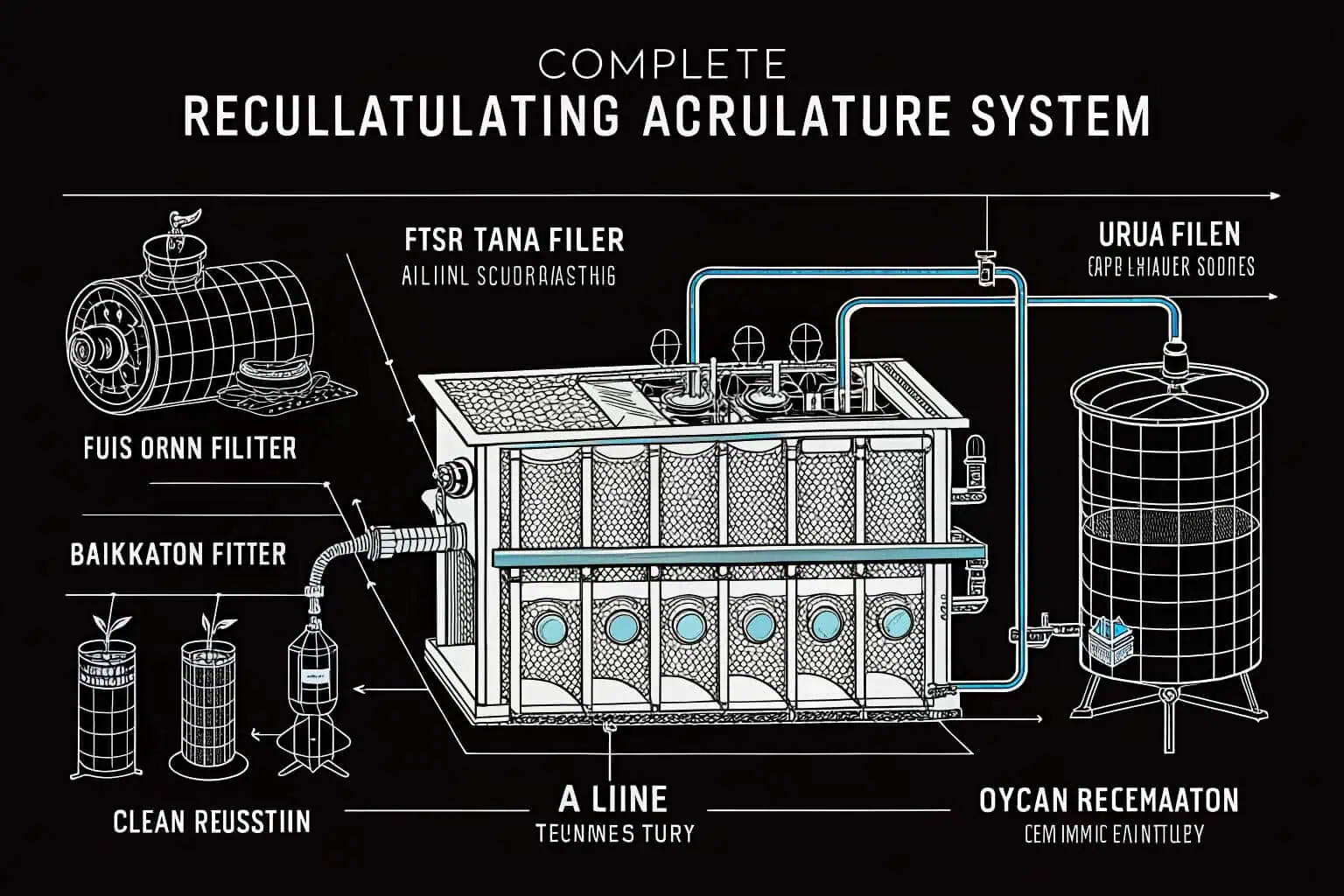
Building my first small-scale RAS11 felt like assembling a high-performance engine. Every part had a specific function, and they all had to work in perfect harmony. It was intimidating, but also incredibly empowering. Unlike an open pond, which often feels like a black box, a RAS is a transparent system where you can see and manage every step of the process. This transparency is what gives you unprecedented control over your production. Let's walk through the key components that make up this powerful system.
The Fish Tanks: The Growing Environment
This is where the fish live and grow. Tanks in a RAS are typically circular to promote a self-cleaning flow, concentrating solid waste in the center for easy removal. The design is crucial for fish welfare and operational efficiency. At Bancy, we provide a range of tanks, from our robust Galvanized Sheet Fish Tanks12 to our flexible Collapsible Plastic Fish Tanks13, all designed to integrate seamlessly into a RAS. The tank isn't just a container; it's the primary habitat, and its design directly impacts fish health and the effectiveness of the entire system.
The Filtration Loop: The Engine Room
This is the heart of the RAS. It's a multi-stage process. First, a Mechanical Filter (often a drum filter) screens out solid wastes like feces and uneaten feed. This is critical because decomposing solids consume oxygen and release ammonia. Second, the water flows to the Biological Filter (or biofilter). This is where the real magic happens. A colony of beneficial bacteria14 lives on media with a large surface area, converting toxic ammonia into less harmful nitrate. This biological process is the most vital part of the system. Without it, the fish would quickly poison themselves. My first successful biofilter felt like a major victory, a sign that I was truly managing a living system.
Life Support: Oxygen and Degassing
Fish, like us, need to breathe. Because RAS allows for very high stocking densities, the oxygen demand is immense. An Oxygenation System, which can range from simple aerators to sophisticated pure oxygen injection cones, ensures the water is saturated with dissolved oxygen. Just as important is removing the carbon dioxide (CO2) that fish exhale. High levels of CO2 are toxic and lower the water's pH. A Degassing Unit or aerator strips this CO2 from the water before it's returned to the tanks. Managing this gas exchange is a constant balancing act, but it's essential for maintaining a healthy, stress-free environment for the fish. Here is a summary of the key components:
| Component | Primary Function | Importance in the System |
|---|---|---|
| Fish Tanks | Houses the aquatic stock. | Must ensure good water flow and fish welfare. |
| Mechanical Filter | Removes solid waste. | Prevents oxygen depletion and ammonia spikes. |
| Biological Filter | Converts ammonia to nitrate. | The core of water purification; prevents toxicity. |
| Pumps | Circulates water. | The 'heart' of the system, drives the entire loop. |
| Oxygenation Unit | Adds dissolved oxygen. | Critical for supporting high fish densities. |
| Degassing Unit15 | Removes carbon dioxide. | Prevents CO2 toxicity and pH drops. |
What are the advantages of RAS aquaculture?
Do you feel constrained by the environmental and spatial limitations of conventional fish farming? The need for specific locations and the large environmental footprint can make it seem like a difficult industry to enter or expand in.
The main advantages of RAS are minimal water usage, complete environmental control leading to faster growth, biosecurity from external pathogens, and the flexibility to be located anywhere. This allows for year-round production of high-quality fish close to market, reducing transportation costs and environmental impact.
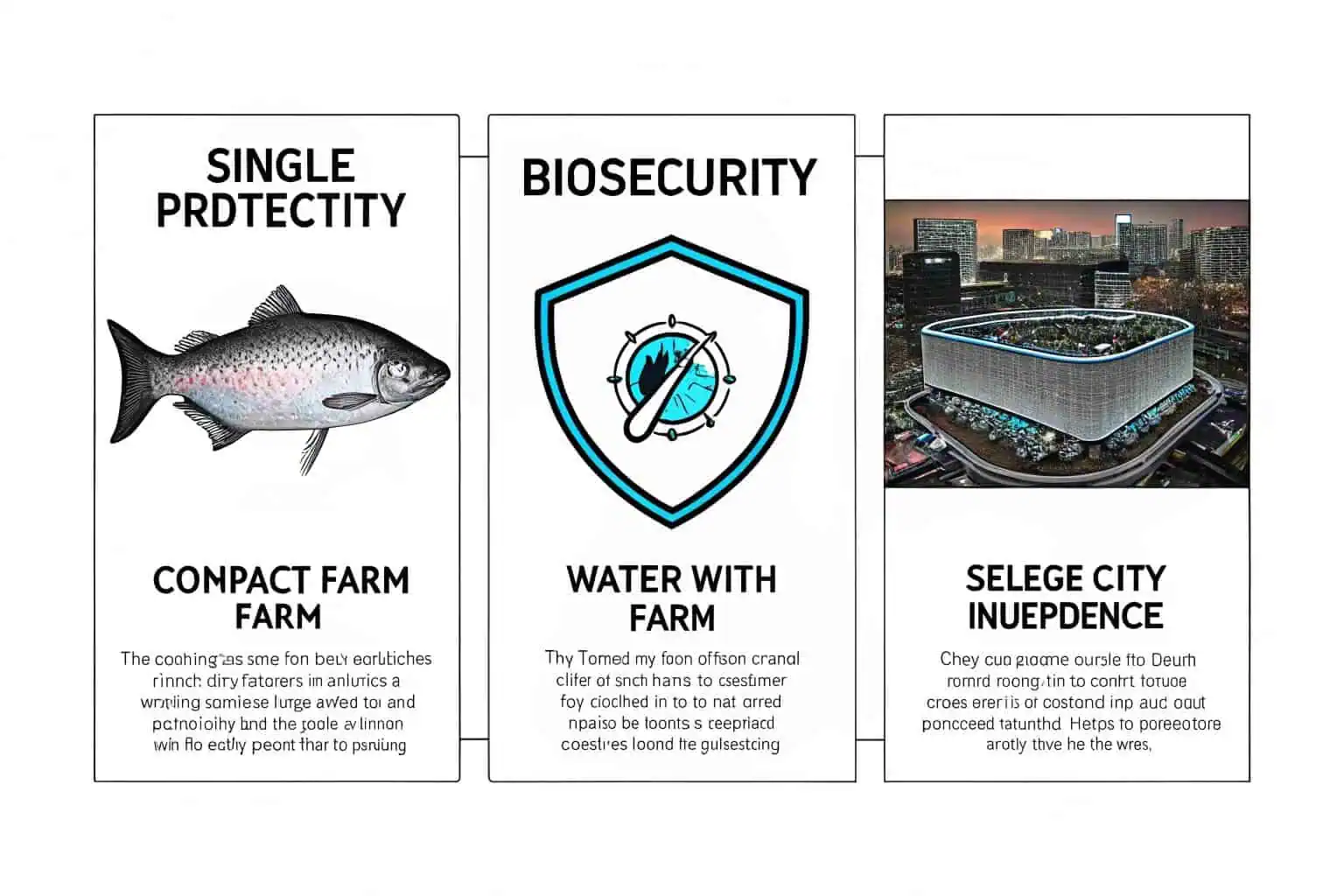
When I decided to invest in RAS, it was because I was drawn to its promise of sustainability and efficiency16. I was tired of the waste and uncertainty of pond culture. The ability to control every aspect of the production cycle was a game-changer. It allowed me to not only grow healthier fish faster but also to do so with a fraction of the water and land. This technology doesn't just offer an alternative; it presents a superior way of farming for the modern world. Let's explore these powerful advantages in more detail.
Unmatched Water Conservation
This is perhaps the most celebrated benefit of RAS. Traditional aquaculture can be incredibly water-intensive. A RAS, by contrast, can reduce water consumption by over 99% compared to flow-through systems. The system only requires new water to replace what's lost to evaporation and sludge removal. This incredible efficiency means you can set up a farm in areas with limited water resources. For me, this was a profound realization. We could bring fresh, local seafood17 to communities that never had it before, all while being responsible stewards of our planet's most precious resource.
Biosecurity and Disease Control
In an open pond, your fish are exposed to everything in the environment—pathogens, parasites, and predators. A RAS is a closed, biosecure environment18. You control what comes in and what goes out. By treating the intake water and isolating the system from the outside, you can dramatically reduce the risk of disease outbreaks. This means you don't need to use antibiotics or other chemicals, resulting in a healthier product for the consumer and a more stable business for the farmer. The peace of mind that comes from knowing my stock is protected is invaluable.
Location Independence and Market Proximity
Because RAS is not dependent on a natural body of water, you can build a facility virtually anywhere. This includes urban and suburban areas, close to major markets. This has huge implications for the supply chain. By growing fish close to consumers, you can deliver a fresher product, reduce transportation costs, and lower the carbon footprint associated with food miles. It allows for the creation of local food systems and strengthens food security. This advantage transforms aquaculture from a rural activity into a potential cornerstone of urban agriculture19. Here's a comparison with traditional methods:
| Feature | RAS Aquaculture20 | Traditional Pond Aquaculture |
|---|---|---|
| Water Use | Very Low (recirculated) | High (flow-through or large ponds) |
| Land Use | Low (vertical and dense) | High (large surface area) |
| Biosecurity | High (closed system) | Low (exposed to environment) |
| Climate Dependant | No (controlled environment) | Yes (subject to weather) |
| Location | Flexible (anywhere) | Restricted (near water sources) |
| Harvest | Predictable, year-round | Seasonal, unpredictable |
Conclusion
Ultimately, both RAS and biofloc offer powerful solutions for modern aquaculture. Your choice depends on your goals, resources, and philosophy—whether you prefer the precise control of technology or the dynamic harmony of a managed ecosystem.
-
Exploring complex ecosystems can provide insights into sustainable farming practices and their benefits. ↩
-
Discover the benefits of biological approaches in aquaculture and how they promote sustainable fish farming practices. ↩
-
Understanding the carbon-to-nitrogen ratio is crucial for optimizing aquaculture systems, ensuring healthy growth and sustainability. ↩
-
Explore the advantages of RAS for sustainable fish farming and efficient resource use. ↩
-
Learn about Biofloc Technology's innovative approach to aquaculture and its benefits for shrimp farming. ↩
-
Explore this link to understand how RAS facilities revolutionize fish farming, making it sustainable and efficient. ↩
-
Understanding this concept is crucial for anyone interested in sustainable fish farming and aquaculture practices. ↩
-
Exploring mechanical filters will enhance your knowledge of waste management in aquaculture, vital for system efficiency. ↩
-
Understanding the biofilter's function is crucial for maintaining a healthy aquatic environment, ensuring fish thrive. ↩
-
Exploring ways to optimize growing conditions can lead to improved yields and healthier stock in aquaculture. ↩
-
Exploring this link will provide insights into the advantages and efficiencies of small-scale RAS systems, enhancing your understanding. ↩
-
Explore this link to understand how Galvanized Sheet Fish Tanks enhance fish health and operational efficiency. ↩
-
Discover the advantages of Collapsible Plastic Fish Tanks for flexibility and space-saving in aquaculture. ↩
-
Exploring the role of beneficial bacteria can enhance your knowledge of maintaining a healthy aquatic environment. ↩
-
Learn about the importance of degassing units in maintaining water quality and preventing CO2 toxicity for fish. ↩
-
Exploring this link will provide insights into how sustainable practices enhance aquaculture efficiency, crucial for modern farming. ↩
-
This resource will explain the impact of RAS on local seafood availability and its benefits for communities. ↩
-
Understanding biosecure environments can help you ensure the health and safety of aquatic life, crucial for sustainable farming. ↩
-
Discover insights on urban agriculture's role in food security and community resilience. ↩
-
Explore this link to understand how RAS Aquaculture revolutionizes fish farming and enhances sustainability. ↩